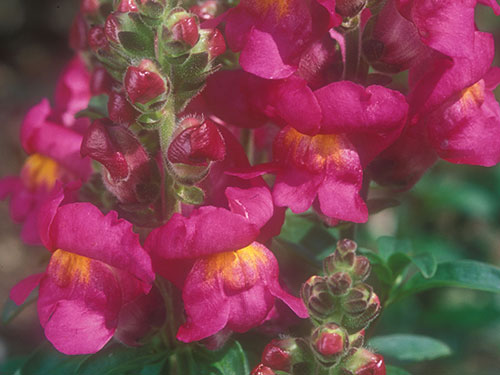This plant is not yet visible in the Garden.
Snapdragon flowers are often found brightening up garden borders with their tall spikes of coloured flowers. Their flowers are symmetrical from left to right, and feature a lip petal which bees must grip in order to open the flower and access the nectar and pollen inside. Snapdragon petals are covered in cone-shaped cells, which make it easier for the bees to hold on. Experiments in the Department of Plant Sciences have shown that bees will fall off mutant plants which lack these conical cells, so it is likely that they have evolved to help with the process of pollination.
Much research is being done today in the area of ‘food security’: working out how to feed a rising global population. Many of our crops rely on pollinator activity, but global pollinator decline means there will be fewer insects to do the work. Researchers here at the University of Cambridge are investigating the characteristics of crop plant flowers, including the distribution of conical cells on their petals, to help make flowers more efficient at being pollinated.


Next: Gazania rigens (Treasure Flower)
Previous: Arctium minus (Lesser Burdock)
Return to the trail home page.

